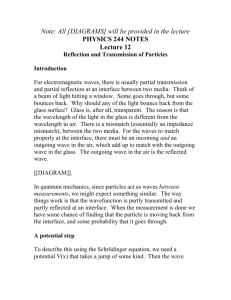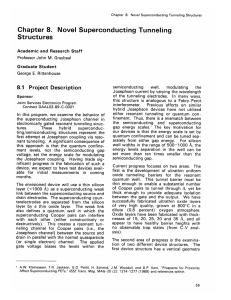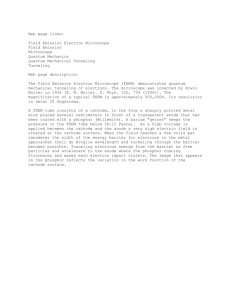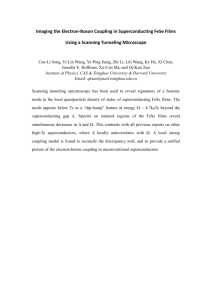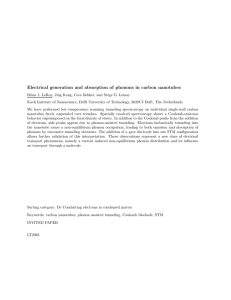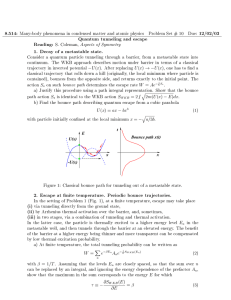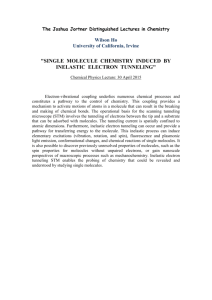MS WORD - Department of Physics and Astronomy
advertisement
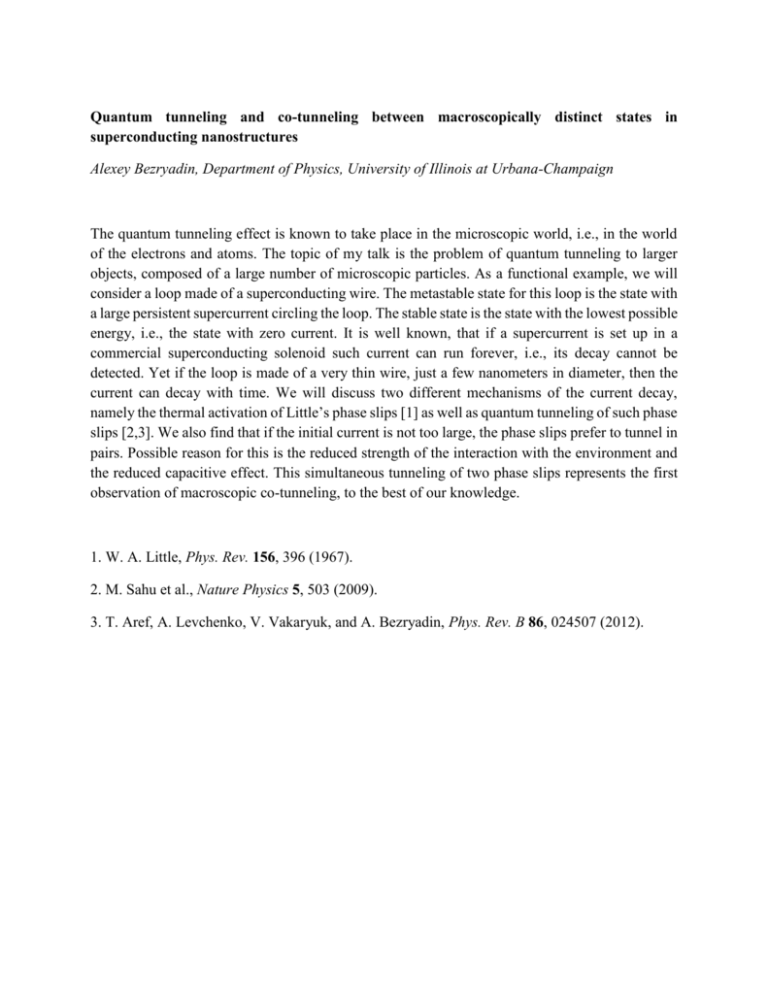
Quantum tunneling and co-tunneling between macroscopically distinct states in superconducting nanostructures Alexey Bezryadin, Department of Physics, University of Illinois at Urbana-Champaign The quantum tunneling effect is known to take place in the microscopic world, i.e., in the world of the electrons and atoms. The topic of my talk is the problem of quantum tunneling to larger objects, composed of a large number of microscopic particles. As a functional example, we will consider a loop made of a superconducting wire. The metastable state for this loop is the state with a large persistent supercurrent circling the loop. The stable state is the state with the lowest possible energy, i.e., the state with zero current. It is well known, that if a supercurrent is set up in a commercial superconducting solenoid such current can run forever, i.e., its decay cannot be detected. Yet if the loop is made of a very thin wire, just a few nanometers in diameter, then the current can decay with time. We will discuss two different mechanisms of the current decay, namely the thermal activation of Little’s phase slips [1] as well as quantum tunneling of such phase slips [2,3]. We also find that if the initial current is not too large, the phase slips prefer to tunnel in pairs. Possible reason for this is the reduced strength of the interaction with the environment and the reduced capacitive effect. This simultaneous tunneling of two phase slips represents the first observation of macroscopic co-tunneling, to the best of our knowledge. 1. W. A. Little, Phys. Rev. 156, 396 (1967). 2. M. Sahu et al., Nature Physics 5, 503 (2009). 3. T. Aref, A. Levchenko, V. Vakaryuk, and A. Bezryadin, Phys. Rev. B 86, 024507 (2012).
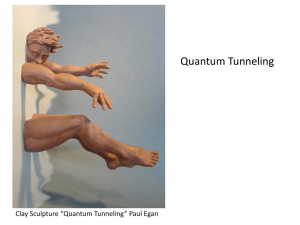

![[1]. In a second set of experiments we made use of an](http://s3.studylib.net/store/data/006848904_1-d28947f67e826ba748445eb0aaff5818-300x300.png)
